Climate & Energy
Under the President’s leadership, the United States did more to combat climate change than ever before, while growing the economy. In fact, during the Obama Administration, carbon emissions decreased 9 percent, while the U.S. economy grew more than 10 percent.

April 27, 2011
Protected the Health of America’s Waters
In April 2011, the Obama Administration released a national Clean Water Framework that recognized the importance of clean water and healthy watersheds to our economy, environment and communities, and emphasized the importance of partnerships and coordination with states, local communities, stakeholders, and the public to protect public health and water quality, and promote the nation’s energy and economic security.
The Administration worked with policymakers, consumers, farmers and businesses to save water — and save money — through 21st century water management policies and technology, and used the latest science and research to identify and address emerging pollution challenges.

Restored the Gulf Coast Ecosystem
On April 20, 2010, the blowout and explosion of the mobile offshore drilling unit Deepwater Horizon resulted in the largest oil spill in U.S. history (Deepwater Horizon Oil Spill).
In response, President Obama issued an Executive Order recognizing the Gulf Coast as a national treasure and addressing the longstanding ecological decline of that region, which was compounded by the Deepwater Horizon Oil Spill.
The Executive Order established a Gulf Coast Ecosystem Restoration Task Force (Task Force) to coordinate intergovernmental efforts, planning, and the exchange of information in order to better implement Gulf Coast ecosystem restoration and facilitate appropriate accountability and support throughout the restoration process.
Two years later, building upon the Task Force’s successful collaboration between between Federal, State, and tribal governments, the Administration established the Gulf Restoration Council through the RESTORE Act, bringing five states and six Federal agencies together to restore Gulf Coast ecosystems and communities.
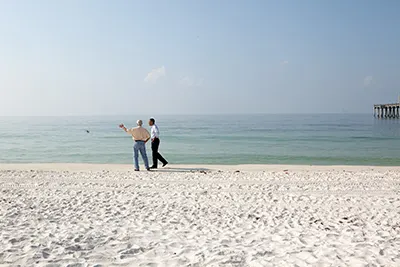
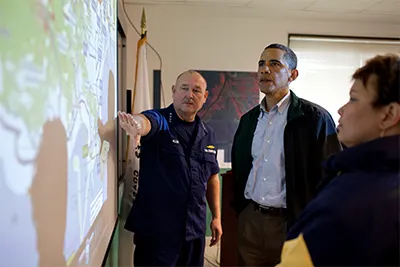
February 3, 2013
Made Buildings More Efficient
President Obama established the Better Buildings Challenge to enlist cities, states, utilities, manufacturers, school districts, and businesses to improve energy efficiency, targeting heavy users such as data centers and outdoor lighting systems. He worked with companies, mayors, university presidents, and labor leaders to drive $4 billion of investment in energy-efficiency upgrades for public and private buildings.
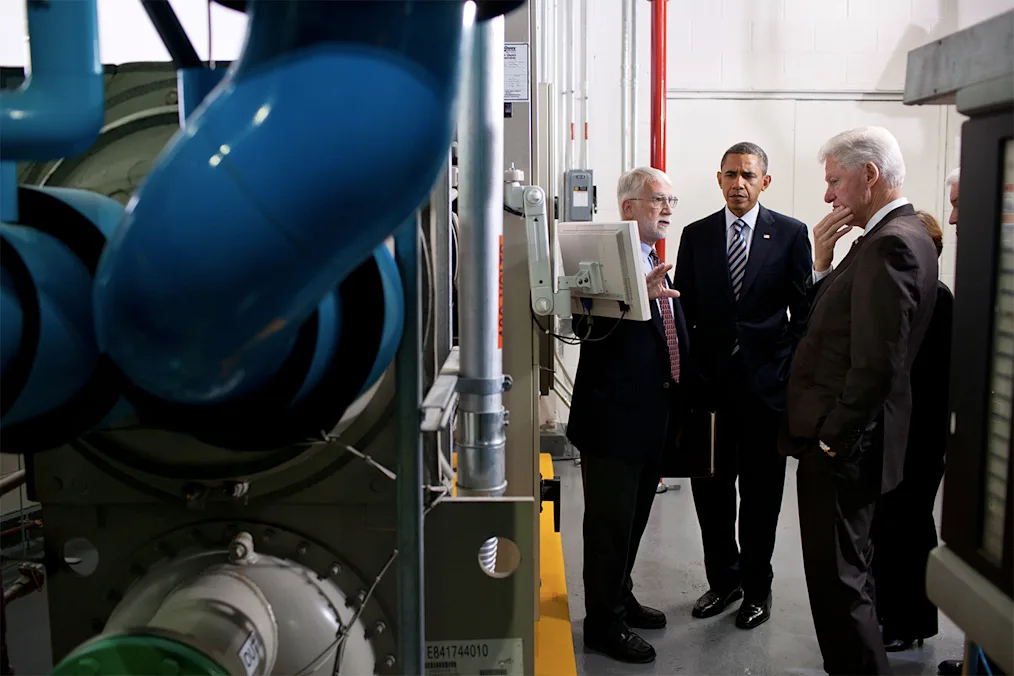
June 25, 2013
Removed Carbon Pollution from the Air
President Obama took a series of common-sense steps to curb carbon pollution and other greenhouse gases through initiatives that drove energy efficiency, promoted clean energy, and put in place the first-ever carbon pollution standards for power plants.
In 2012, U.S. carbon pollution from the energy sector fell to the lowest level in two decades even as the economy continued to grow. To build on this progress, the Obama Administration put in place tough new rules to cut carbon pollution — just like we have for other toxins like mercury and arsenic.
The plan also set a goal to reduce carbon pollution by at least three billion metric tons cumulatively by 2030 — more than half of the annual carbon pollution from the U.S. energy sector — through efficiency standards set over the course of the Administration for appliances and federal buildings.

October 22, 2014
Fostered Climate Literacy
President Obama believed climate education and literacy are particularly important for building a 21st-century workforce, where tomorrow’s community leaders, city planners, and entrepreneurs have the information, knowledge, and training to make sound decisions and grow businesses in the context of a changing climate.
He launched the Climate Education and Literacy Initiative to ensure that all students and citizens have the knowledge and training they need to address the climate change challenge. The Initiative ensured that citizens of all ages have a solid grounding in science, technology, engineering, and math (STEM) skills that serve as a basis for discovery, invention, and innovation.

January 21, 2015
Worked to Protect the Alaskan Arctic
Over the past 60 years, climate change has caused the Alaskan Arctic to warm twice as rapidly as the rest of the United States, and will continue to transform the Arctic as its consequences grow more severe. Higher atmospheric temperatures have led to a steady and dramatic reduction in Arctic sea ice, widespread glacier retreat, increasing coastal erosion, more acidic oceans, earlier spring snowmelt, thawing permafrost, drier landscapes, and more extensive insect outbreaks and wildfires, thus changing the accessibility and natural features of this remote region.
President Obama established the Arctic Executive Steering Committee to coordinate national efforts in the Arctic, and to strengthen cooperation among Federal agencies, State, local, tribal, academic, private and other groups to mitigate the impacts of climate change in the Arctic.

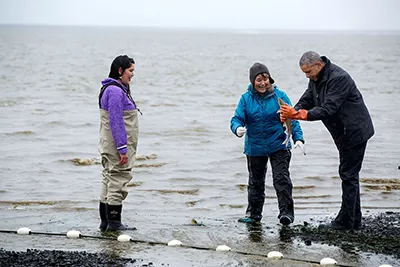
Invested in Clean Energy
In June 2015, the Obama Administration launched the Clean Energy Investment Initiative to expand private-sector investment in promising technologies aimed at reducing carbon pollution, including inspiring more than $4 billion in private-sector commitments and executive actions to scale up investment in clean-energy innovation.
The Administration also dedicated new federal resources for economic diversification, job creation, training, and other employment services for workers and communities impacted by layoffs at coal mines and coal-fired power plants.
Finally, President Obama committed to combating climate change to protect future generations while supporting a strong rural economy, as climate change was already affecting rural communities across the country and putting homes, businesses, and vital infrastructure at risk. In response, the U.S. Department of Agriculture announced a new investment in nearly 550 renewable energy and energy efficiency projects across the country totaling nearly $7 million in funding through its Rural Energy for America Program (REAP).

Invested in Climate Resilience
The Obama Administration developed the Climate Resilience Toolkit, a website to provide centralized, authoritative, easy-to-use information to help communities prepare for the impacts of climate change. The President also supported expanded use of green infrastructure techniques to improve natural management of stormwater and boost community resilience to flooding and other impacts of climate change.
To enhance commitments to building resilience in vulnerable communities disproportionately affected by the impacts of climate change — many of which are already facing economic or health-related challenges — the Administration and its partners announced the first-ever Resilience AmeriCorps. The two-year pilot program recruited, trained, and embedded AmeriCorps VISTA members in ten communities across the country to increase civic engagement and community resilience in low-income areas, and help those communities develop plans for becoming more resilient to any number of shocks and stresses, including better preparations for extreme weather events.
August 24, 2015
Reduced the Government’s Emissions
President Obama was committed to addressing the climate change threat — both by taking action here at home and showing leadership on the world stage.
As part of his commitment to lead by example to curb the emissions that are driving climate change, President Obama issued an Executive Order to cut the Federal Government’s greenhouse gas (GHG) emissions 40 percent over the next decade from 2008 levels — saving taxpayers up to $18 billion in avoided energy costs — and increased the share of electricity the Federal Government consumes from renewable sources to 30 percent. Complementing this effort, several major Federal suppliers announced commitments to cut their own GHG emissions.
Together, the combined results of the Federal Government actions and new supplier commitments will reduce GHG emissions by 26 million metric tons by 2025 from 2008 levels, the equivalent of taking nearly 5.5 million cars off the road for a year.
Preserved Open Spaces and Endangered Species
Early in his tenure, President Obama signed the Omnibus Public Land Management Act of 2009, the most extensive expansion of land and water conservation in more than a generation, which designated more than 2 million acres of Federal wilderness and protected thousands of miles of trails and more than one thousand miles of rivers.
Committed to giving every kid the chance to explore America’s great outdoors and unique history, President Obama also launched an “Every Kid in a Park” initiative that provided all fourth-grade students and their families free admission to all Federal lands and waters for a full year.
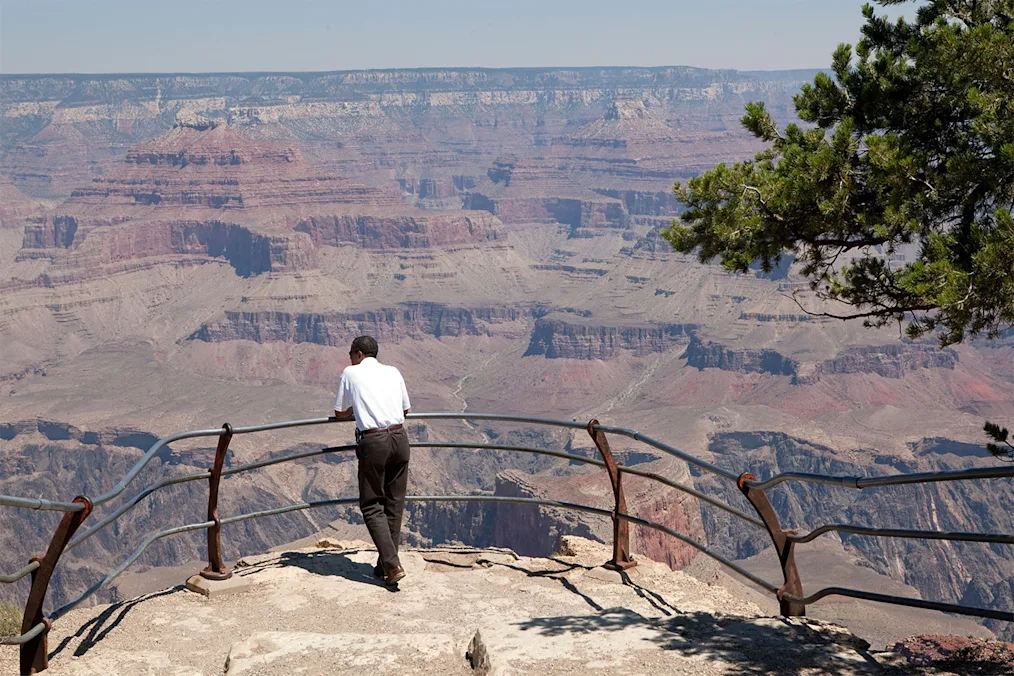
December 12, 2015
Led the Paris Agreement
The Obama Administration led a global effort to achieve the Paris Agreement among 196 countries to take real action on climate change that calls for strong transparency, ensuring countries adhere to ambitious emissions reduction goals, and setting the world on a course to cut carbon pollution and other greenhouse gases.
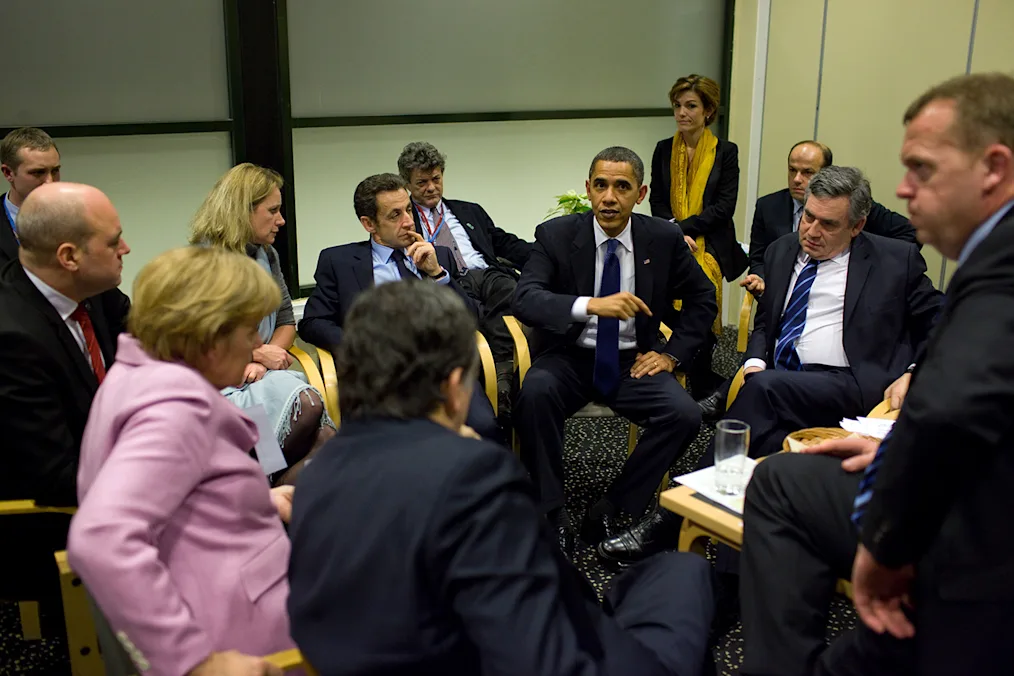
Made Homes More Efficient
President Obama was committed to taking responsible steps to slow the effects of climate change so we leave behind a cleaner, more stable environment for future generations.
In September 2014, the Administration announced new private sector commitments and executive actions to reduce emissions of hydroflourocarbons (HFCs), powerful greenhouse gases that contribute to climate change. The commitments made in 2014 would reduce cumulative global consumption of these greenhouse gases by the equivalent of 700 million metric tons of carbon dioxide through 2025, equivalent to 1.5% of the world’s 2010 greenhouse gas emissions and the same as taking nearly 15 million cars off the road for 10 years. New energy efficiency standards for appliances and equipment also cut consumers’ electricity bills by hundreds of billions of dollars,
Additionally, President Obama led an international coalition of countries to secure an amendment to the Montreal Protocol to phase down HFCs, potent greenhouse gases. The amendment, which had strong support from U.S. industry, would avoid more than 80 billion metric tons of carbon dioxide equivalent by 2050 — equivalent to more than a decade of emissions from the entire U.S. economy — and could avoid up to 0.5°C of warming by the end of the century.
December 20, 2016
Worked with Canada to Protect the Arctic
On December 20, 2016, in partnership with our neighbors and allies in Canada, the Obama Administration took historic steps to build a strong Arctic economy, preserve a healthy Arctic ecosystem and protect the United States’ fragile Arctic waters, including designating the bulk of our Arctic water and certain areas in the Atlantic Ocean as indefinitely off limits to future oil and gas leasing.

Learn more about the Obama Administration
Browse the story of President Obama’s administration and the Obama family’s time in the White House.
Explore by Topic or Era